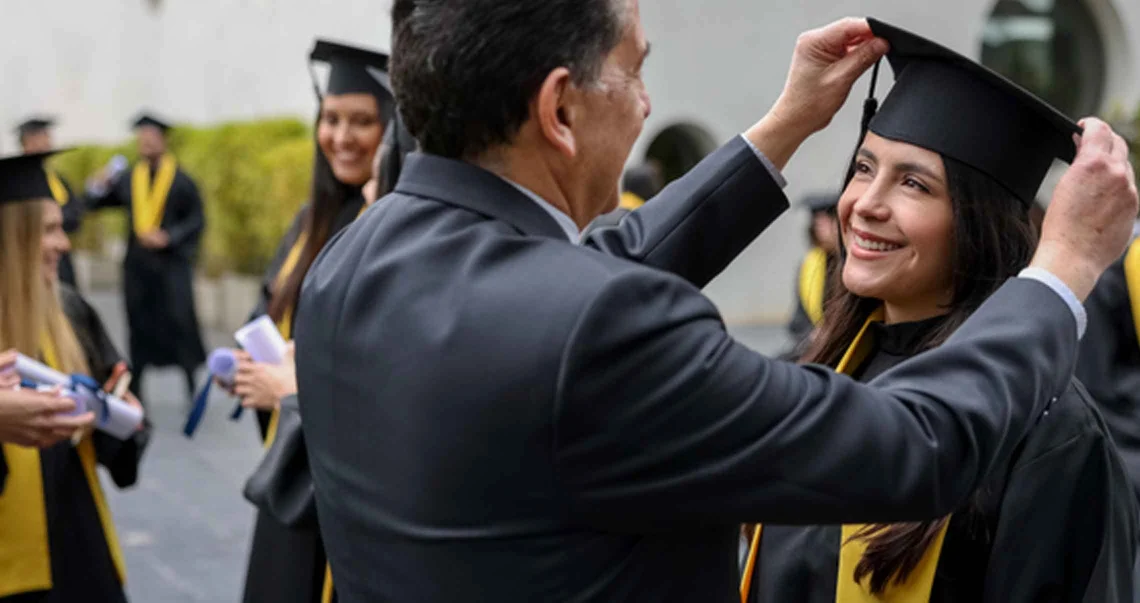Digital banking for business
Seamlessly access all of your accounts from one place with First Citizens Digital Banking for business.

Hank Dunbar
Senior Vice President | Philanthropic and Charitable Strategist
In 2020, Americans gave a staggering $71.3 billion to support education causes, second only to contributions made to faith-related organizations. This amount increased in 2021, but the final number is not yet available—although higher-education gifting seems to be closing the gap on faith-related gifting.

There are many reasons someone may want to make a gift to an educational institution. Some of the most common reasons are to give thanks to an alma mater that gave a great experience, pay it forward for the next generation or make a gift to their children's or grandchildren's current school.
Donating to a beloved alma mater in and of itself feels good and is a benefit. The good news is that there are also potential financial benefits to donating to such institutions.
When it comes to donations and ensuring you can deduct them from your tax return, work with your tax professional who can guide you through both federal and state return guidelines.
If your alma mater or children's school has reached out to you for a donation, you've probably heard about multiple types of campaigns. If you'd like to make a gift, you should consider the nature of the assets you contribute—such as cash, publicly traded securities, real estate—as well as how that contribution will be used.
Annual fund campaigns support the general operating funds of an institution, but it's easy for a donor to restrict use of the funds based on the donor's particular interests. Donors may want to direct gifts to a program, like performing arts or athletics, or an academic field, like the school's biology or political science department. Either way, these contributions can help offset the ongoing, day-to-day operations of the institution.
Capital campaigns are also important to higher education because they secure funds to support construction, renovation and infrastructure needs. These campaigns run separately from or parallel to annual fund campaigns and focus on giving over and above a donor's typical annual fund gift. Contributions for construction or renovation usually present the opportunity for a donor to name a space in the facility—larger gifts for more visible and larger spaces, smaller gifts for offices or classrooms.
Endowment campaigns focus on securing funds that will provide ongoing support for an institution. Contributions are accompanied by an endowment agreement that specifies any restrictions placed on the funds, such as a scholarship, professorship or lecture series. While donors may want to place restrictions based on the current educational environment and institutional needs, they should understand that things change over time and should allow—and even encourage—that an agreement include flexibility to provide for the institution's future needs. Most institutions set minimums for named endowment funds, but they usually offer opportunities for donors to make gifts to general or program-specific endowment pools.
When it comes to gifting to educational institutions, many potential donors turn first to cash donations. They're easy to execute and in most cases are fully deductible from your federal tax return.
But gifting doesn't have to stop at cash payments. There are many types of lifetime gifting structures potential donors can leverage, especially to make regular or large donations. Key benefits for lifetime gifting or gifting at death include reducing the size of the gross estate and income tax deductions within certain percentage limitations.
Split-interest gifts are a good solution for potential donors who are unwilling or unable to contribute the entire asset during their lifetime. This structure means the donor can split the asset into two parts, where one portion is given in trust to the educational institution or charitable institution and the other portion is retained for the estate holder's use.
A charitable remainder unitrust is a unique gift to an organization—such as an educational institution—which allows you, the donor, to enjoy supplemental income and immediate tax benefits, as well as reduce the taxable value of your future estate. With a charitable remainder unitrust, a trust is established and funded with cash or other assets such as appreciated property or stocks. The amount you receive as income each year is calculated annually based on a set percentage chosen by you of the market value of the assets. Upon your passing, the balance of your trust supports the organization's mission.
The idea behind a charitable remainder annuity trust is almost the same as the charitable remainder unity trust. The annuity trust is funded with your assets, but the amount you receive as income each year is fixed for the remainder of your life. Both the unitrust and annuity trust can help you eliminate upfront capital gains tax on long-term appreciated assets and securities.
If you want to make gifting to an educational institution part of your legacy, having a basic understanding of the benefits and your options is a good place to start. To learn more about specific structures that will optimize your gifting and estate plan, get in touch with a First Citizens charitable and philanthropic specialist who can hep you navigate what and how to give to support your favorite educational cause.
Email Us
Please select the option that best matches your needs.
Customers with account-related questions who aren't enrolled in Digital Banking or who would prefer to talk with someone can call us directly.